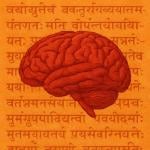Scientists are working on separating the genes for longevity! But is the world ready for that advancement? Will our social and financial systems be able to respond to those changes?
Is aging necessary? Are the wrinkles and gray hair, weakening muscles, neurodegeneration, reduced cardiovascular function, and increased risk of cancer that afflict organisms toward the end of their lives inevitable? Or are these age-related changes part of a genetic program that can be altered?
Molecular biologists experimenting with organisms such as yeast, roundworms, fruit flies, and mice have found that they can dramatically extend life span by tweaking single genes. The altered organisms don’t just live longer, they age more slowly, in many cases retaining youthful characteristics even after normal individuals have died. More remarkable, the genetic manipulations that cause these changes seem to work through a common pathway across all species. This suggests that if there is a program that controls aging, it must be ancient indeed: in evolutionary terms, yeast and mammals diverged about a billion years ago.
Separately, geneticists studying long-lived people appear to be narrowing in on a gene common to centenarians that promotes longevity. Given these advances, the possibility that the human life span could be extended seems tantalizingly close. But some scientists caution that for all the genetic similarities between model organisms and humans, the differences may be greater than we imagine. Researchers still don’t know what causes aging in any animal. Evolutionary biologists, who theorize about why some organisms naturally live longer than others, ask if there is any reason to believe that maximum human life span, already at the upper end of longevity among mammals, could be increased at all—even as researchers on aging, spurred by new experimental breakthroughs, increasingly ask, Why not?














